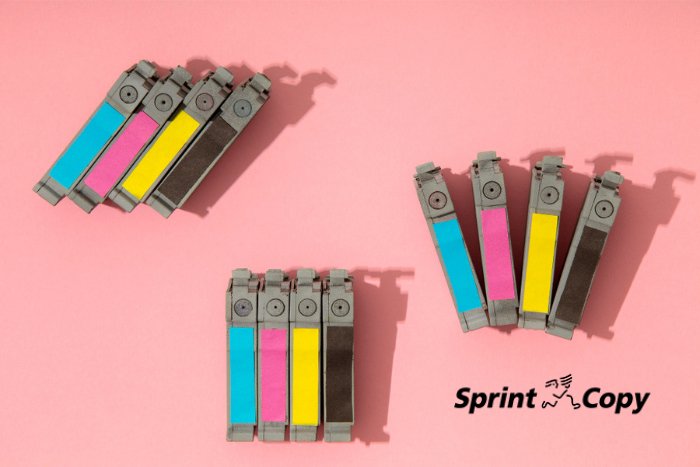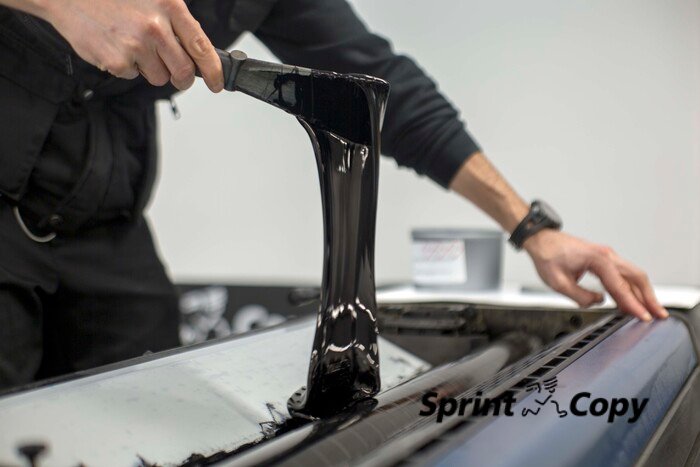What you should know about types of printing inks
The world of printing does not only depend on paper or format, but also on a fundamental element: inks. Choosing the right type of ink for each project can make the difference in the final result. Not all inks are the same, and knowing their characteristics, advantages and applications is essential to obtain a professional finish on any printed job. In this article, we will explore the different types of inks used in printing and how to choose the best option for your needs.
Why is it important to know the different types of printing inks?
Before going into the details of the different types of inks, it is important to understand why this is relevant. Each printing project has specific requirements, and the ink you choose will affect aspects such as durability, color and the overall quality of the output. Knowing the differences between ink types will allow you to make informed decisions to optimize the quality of your prints, both for small and large format projects.
Vegetable oil inks
Vegetable oil inks have gained much popularity due to their focus on sustainability. These inks, based on natural oils such as soybean, are a more environmentally friendly alternative to conventional petroleum-based inks.
- Advantages:
- Biodegradable and environmentally friendly.
- Good printing quality with vivid colors.
- Less environmental impact.
- Disadvantages:
- Can take longer to dry compared to other inks.
- Not always suitable for high volume printing.
UVI Offset Inks
UVI Offset inks are designed to be dried by ultraviolet light, which allows the curing process to be instantaneous, making them very efficient in industrial and commercial jobs.
- Advantages:
- Fast drying due to UV light.
- Increased durability and resistance to scratches and wear.
- Ability to print on a variety of substrates (plastic, metal, cardboard)
- Disadvantages:
- Require specialized equipment with UV lamps.
- Can be more expensive compared to other traditional inks.
Latex Inks
Latex inks are very popular in large format printing and are widely used in the production of outdoor graphics, signage and textiles.
- Advantages:
- Water-based, making them less toxic and more environmentally friendly.
- Flexible and durable, ideal for applications such as vehicle graphics.
- Excellent weather and UV resistance.
- Disadvantages:
- Although environmentally friendly, their application sometimes requires additional heat treatment to cure.
- Less suitable for high precision printing compared to other types.

Water-based inks
Water-based inks are a safe and clean option for many printing applications, such as textiles, packaging and products that do not require outdoor exposure.
- Advantages:
- Low toxicity and no volatile solvents.
- Good for green projects and safe for indoor use.
- Vivid, well-defined colors.
- Disadvantages:
- Not as durable for outdoor printing or extreme environments.
- Require slower drying compared to UV or solvent inks.
Digital UVI Inks
Digital UVI inks combine ultraviolet curing technology with the precision of digital printing, making them one of the most versatile options in modern printing.
- Advantages:
- They print on a wide range of materials with high quality.
- Vibrant colors and high weather resistance.
- Instant curing process, allowing for fast production.
- Disadvantages:
- Require specialized equipment, which can increase production costs.
- Less flexibility than latex inks in applications on flexible surfaces.
How to choose the right ink type for your project?
Choosing the right type of ink will depend on several factors, including the type of surface to be printed on, the end use of the product and the available budget. Here are some tips for choosing the right ink:
- Project Use: If outdoor printing is involved, solvent or eco-solvent inks will be best suited due to their resistance to weathering.
- Sustainability: If the focus is eco-friendly, water-based or eco-solvent inks are a better choice.
- Surface type: For non-porous or specialty materials, UV inks may be the most suitable choice.
- Budget: Ink types vary in price, so it is important to balance quality with cost.
Conclusion
In the world of printing, knowing the different types of inks is key to getting the best possible result for each project. From water-based inks to solvent and UV inks, each type has its own advantages and specific applications. Choosing the right ink will not only improve the quality of your prints, but will also allow you to optimize the durability and finish of your jobs.
At Sprintcopy, we are a printing company in Barcelona specialized in offset and digital printing. We have a wide variety of printing solutions for small and large format projects. If you need more information about ink types or any other aspect related to printing, we invite you to visit our blog or contact us directly. We are here to advise you on everything you need for your printing projects.

